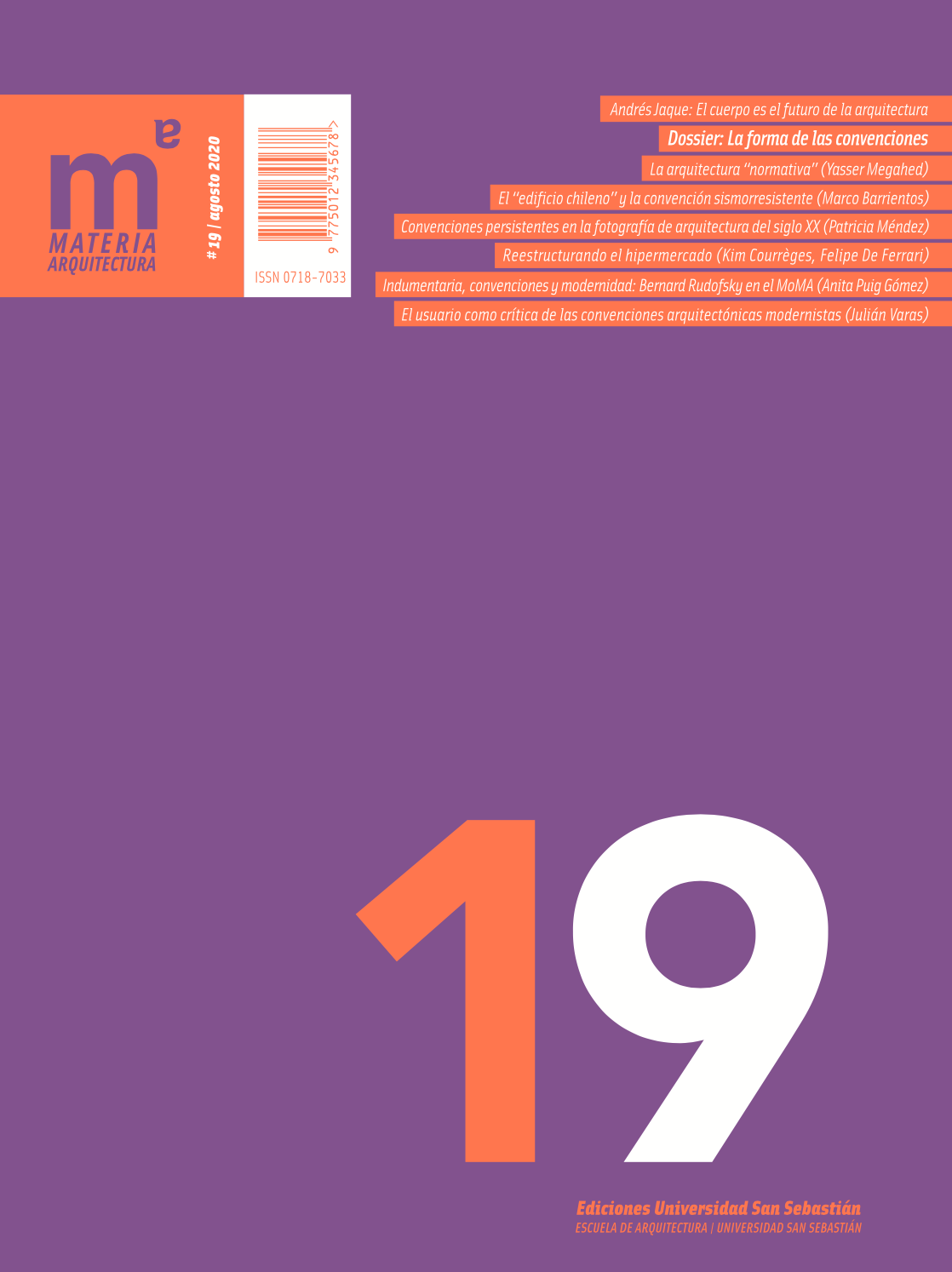A Springboard for Complexity: The User as a Critique of Modernist Architectural Conventions, ca. 1960
Main Article Content
Abstract
This essay outlines the influence that the new guidelines and conventions introduced by the postwar representations of the user exerted on the design of collective housing during the period between ca. 1950 and ca. 1970. It analyzes the forces that brought them to the fore, its various meanings, the polemics it was part of, and fundamentally, how its instrumentalization ushered in a new agenda of heterogeneity – a process that allowed a drastic raising of the threshold of architecture’s formal and procedural complexity. The conclusions establish that what had been initially posited as a set of external demands on architectural design became a means by which the discipline was able to adapt and exert its influence on the new cultural conditions of what would later be described as the era of postfordism. The findings of the essay are based on a review of relevant primary sources as well as recent historiographical discussions of the architecture of the postwar period.
Article Details
Materia Arquitectura provides immediate and free access to all the content of this online edition, published simultaneously with the print edition.
Materia Arquitectura does not charge authors for any concept.
All contents of this electronic edition are distributed under the Creative Commons license of "Attribución-shareAlike 4.0 Internacional" (CC-BY-SA).
The rights of the published texts and images belong to their authors, who grant Materia Arquitectura the license for their use. The management of the permits and the authorization of the publication of the images (or of any material) that contains copyright and its consequent rights of reproduction in this publication is the sole responsibility of the authors of the articles.
As long as they mention their origin, the authors are free to distribute their articles by other means. Any total or partial reproduction of the material must mention its origin.
